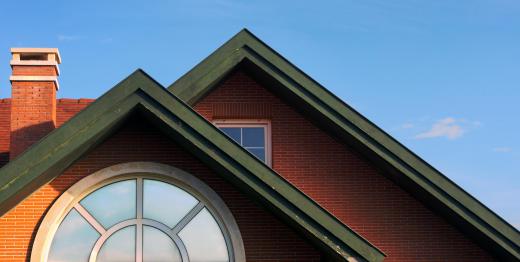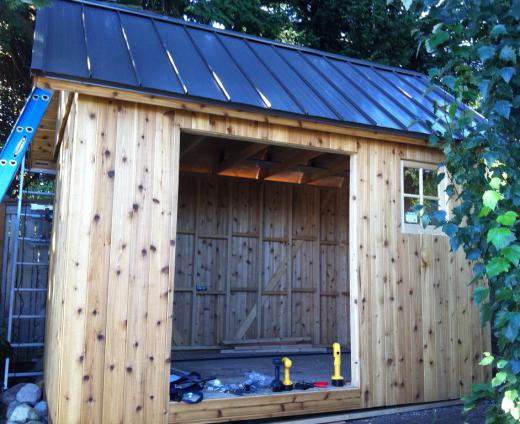Roof ventilation, also known as attic ventilation, comes in various forms. Comprised of intake and exhaust vents, the basic roof ventilation system can be found in a few forms, including turbine vents, low-profile vents, and ridge vents that are specially designed to accommodate specific roof shapes. Energy-saving solar-powered vents and skylights are also available.
An important roofing element, the ventilation system lowers the difference in temperature between the attic and outdoor air. Moisture and heat are removed from the attic, putting less strain on the roof and helping to make roofing materials last much longer. Accumulated moisture can cause enough damage that roof replacement may eventually be required. Parts of the roof and items stored in an attic can easily be damaged in temperatures up to 150°F (65.5°C), that occur within improperly ventilated attics.

One type of roof ventilation is the turbine vent. A roof turbine, known also as a rotary vent, has a spinning top that serves as the exhaust mechanism. It is affected by wind, but the wind doesn’t have to be blowing for the unit to work. This type of vent is high profile and, while considered to be very effective, is not always a desirable choice.
While the roof turbine has a more protruding design, there are various choices for low-profile roof ventilation. These are generally less expensive and are available in materials such as steel, plastic, and copper. Various shapes and styles accommodate different roofing types and design choices.

Another form of roof ventilation is ridge ventilation, which is suitable for peaked roof systems. This kind of system is composed of a vent and ridge cap that install along a slot that is cut down the roof ridge, forming a continuous ventilation system. It can have a shingled-over design to make it match the shingles on the roof, while there is also a system with a single-piece vent and ridge cap that installs along the roof ridge.
More modern forms of roof ventilation include the solar attic fan, which is basically a vent fan with a solar panel attached to it. Power and cooling costs are saved when using such a system. Skylights also provide natural light that can warm the home inexpensively, and include vents that can offer sufficient roof ventilation. Depending on the type of roof you have and your stylistic preferences, there are usually a few choices to consider for roof ventilation.

